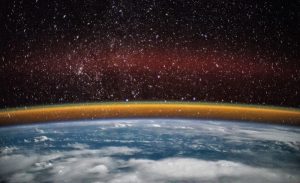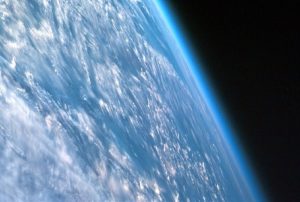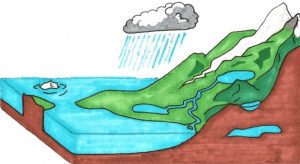Magnetosphere
The magnetosphere is an earth layer formed by the interaction between the earth's magnetism and the solar wind, the solar wind is given by the movement of the sun's corona in its own atmosphere. It is caused by the earth's magnetic field. Practically, all the planets that exist have a magnetosphere, only Mars and Venus do not have any. Due to solar wind variations, it suffers continuous modifications both in its form and in its structure, so that, when there is a deep intensity, it compresses in the direction of the sun and extends in the opposite direction. It is a region that surrounds the planet earth and begins with a height of 500 kilometers and extends to reach 60,000 kilometers.
What is the magnetosphere?
The magnetosphere is the outermost and largest layer of the Earth's atmosphere. It is a very important layer that protects the earth's atmosphere against the ionic radiation radiated by radioactive elements such as uranium. Without it, all human, plant and animal life on the planet would die immediately.
History
The property of the compass rose needle to indicate north and south was discovered in China around the year 1000, and in the year 1600 William Gilbert in London showed that this could be explained if all the earth were a great magnet. As a model for the magnetic earth he used a spherical magnet, which he called “little Earth”. He moved a small compass over the surface of a model of a magnetized sphere representing the earth and showed that it always pointed to its magnetic poles. In the 1830s, a worldwide network of magnetic observatories was established, and it was discovered that compass needle disturbances, which were occasionally noticed, occurred in a worldwide pattern. They seemed to come from outside the Earth, and Alexander Von Humboldt called them magnetic storms. After 1958, when the first scientific spacecraft was launched and when Explorers 1 and 3 discovered the radiation belt, scientists were able to appreciate the complexity of the electrical and magnetic phenomena that occur in the magnetic environment of Earth. In 1959, Thomas Gold of Cornell University proposed calling that environment the “magnetosphere”, and that name is still used today.
Magnetosphere’s characteristics
- It’s the outermost part of a planet.
- It is located 100,000 kilometers from the earth.
- It acts as a shield against solar wind
- Its interior is divided and large regions in which plasma is structured in a certain way giving origin to the plasmasphere and within them the Van Allen
- It is full of plasma of ionospheric
- Its magnetic field is well ordered.
Structure
The inner magnetosphere does not include the pole region and is relatively stable. It has a thick, hot plasma sheet located in the center of the tail, it is also a dynamic zone varying energy and density, and the plasma here flows in different directions. The plasma sheet has its associated electricity flowing from side to side. The tail lobes are regions with smooth magnetic fields and point towards the earth, north of the equator. Sometimes you can see some layers over the magnetopause.
Function
- Among the most important functions of the magnetosphere, we can mention the following:
- It protects the earth against particles that come from the sun.
- It protects water in the atmosphere and oceans by preventing the dissociation of hydrogen and oxygen atoms.
- Prevents malfunctions or interruptions in radio, radar or satellite equipment.
- Its magnetic poles are used for orienting humans and some animals.
- It protects us against ionic radiation, preventing life on earth from being destroyed.
- It protects our planet from the radiation of solar particles and some cosmic particles, and also protects the atmosphere from erosion caused by the solar wind: the constant flow of charged particles coming out of the sun.
Importance of terrestrial magnetosphere
Its importance lies in the fact that the Earth’s magnetosphere acts as a protective shield to the atmosphere, avoiding ionic radiation. This ionic radiation is very dangerous for living beings because it is the same radiation that radiates, for example, uranium. Without it, ionic radiation would enter our planet, destroying all forms of life that inhabit the planet. Without it, oceans and atmospheric water would be lost because, without it, solar particles would have been able to destroy hydrogen and oxygen atoms.
Mars’s magnetosphere
Although Mars does not have a magnetosphere because it lacks an important internal magnetic field, it is enveloped in the magnetic field that transports the plasma from the Sun. Mars has been extensively explored by different U.S. and Soviet space vehicles and plasma strings attached to these magnetic lines have been observed in its surroundings, which gives them a particular magnetic and plasma environment.
Jupiter’s magnetosphere
This is the largest, most dynamic and most energy-intensive process. The diameter of its tail is 3,000 radii and if it were possible to see it would be four times larger than the moon. It comes from volcanic gases inside and the plasma pressure is so great that it manages to stop solar wind.
Saturn’s magnetosphere
Its magnetosphere is still under study, but it is known to be one of the smallest and least dynamic, but it has radiation belts in its magnetic fields that emit radio waves that have allowed its study from space.
How to cite this article?
Briceño V., Gabriela. (2019). Magnetosphere. Recovered on 4 January, 2025, de Euston96: https://www.euston96.com/en/magnetosphere/










